Ecoboost condensate catch can, post your results here
#41
Hahaha, I was just joking around and did stumble upon a new wwest. [MENTION=177403]jrcope[/MENTION] , Whats up homie?
#42
Senior Member
#43
Senior Member
And what do I think? I think you guys would be well advised to understand who you are getting your information from? As far as I know, there are 2 MECHANICAL engineers in any of these conversations,(and I don't think the guy that started the other thread is one of them? )but honestly, I would take anybody that works, or has worked in the automotive field? Preferably someone who has turned wrenches for a living? Please do not confuse ignorance with the level of intelligence. There are plenty of intelligent people on here and I am sure that they are very qualified in THIER field!
)but honestly, I would take anybody that works, or has worked in the automotive field? Preferably someone who has turned wrenches for a living? Please do not confuse ignorance with the level of intelligence. There are plenty of intelligent people on here and I am sure that they are very qualified in THIER field!
I never said don't drill the hole, I think it is a smarter move to stop it before it gets to that point, because if it really is an issue, the chances of the hole blocking is much too high? But if that is what your budget allows, do it!
 )but honestly, I would take anybody that works, or has worked in the automotive field? Preferably someone who has turned wrenches for a living? Please do not confuse ignorance with the level of intelligence. There are plenty of intelligent people on here and I am sure that they are very qualified in THIER field!
)but honestly, I would take anybody that works, or has worked in the automotive field? Preferably someone who has turned wrenches for a living? Please do not confuse ignorance with the level of intelligence. There are plenty of intelligent people on here and I am sure that they are very qualified in THIER field!I never said don't drill the hole, I think it is a smarter move to stop it before it gets to that point, because if it really is an issue, the chances of the hole blocking is much too high? But if that is what your budget allows, do it!
I dont have a weep hole, all I have is catch cans. But I have never had the issue, even before the cans were installed. But I do know, that if they dont agree with you, they are "ignorant". I have no doubt you are intelligent and have knowledge of this, but the way you argue it, you come off as an ***. I feel the source for the condensation is 2 different spots, remove one of those, either with catch can or drilling hole and the truck can handle whatever condensation is left.
Last edited by Rheller1; 03-14-2014 at 01:01 PM.
#45
#46
"had the RX catch can been available then, that is where I would have started!
Time will tell if this is the complete fix? At the very least, it is one of the keys to the castle!"
 We're on the same page. If you read any of my other posts on this, I understand the value of keeping the swill out of the intake/combustion chamber.
We're on the same page. If you read any of my other posts on this, I understand the value of keeping the swill out of the intake/combustion chamber.
Time will tell if this is the complete fix? At the very least, it is one of the keys to the castle!"
 We're on the same page. If you read any of my other posts on this, I understand the value of keeping the swill out of the intake/combustion chamber.
We're on the same page. If you read any of my other posts on this, I understand the value of keeping the swill out of the intake/combustion chamber.
The following users liked this post:
Left Plate (03-14-2014)
#47
Senior Member
I dont have a weep hole, all I have is catch cans. But I have never had the issue, even before the cans were installed. But I do know, that if they dont agree with you, they are "ignorant". I have no doubt you are intelligent and have knowledge of this, but the way you argue it, you come off as an ***. I feel the source for the condensation is 2 different spots, remove one of those, either with catch can or drilling hole and the truck can handle whatever condensation is left.

I am passionate about this issue because I HAVE experienced it and I HAVE taken steps to eliminate it! The diesel guys (at least the ones that are worth a crap), know this very well. Keep the air clean, keep the air clean, keep the air clean!
And please understand that "ignorance" is not a measure of "intelligence", rather a lack of understanding when one thinks they do?
The following 2 users liked this post by Left Plate:
brucesears (03-14-2014),
jwanck11 (03-14-2014)
#48
If this is the case, then what purpose does a catch can really provide?
Every car gets build up on the valves, whether direct injection or not. It has proven to be a non issue.
I want to see what happens to these trucks with catch cans when the rain comes. If they're brave enough to post up the results, only time will tell.

Every car gets build up on the valves, whether direct injection or not. It has proven to be a non issue.
I want to see what happens to these trucks with catch cans when the rain comes. If they're brave enough to post up the results, only time will tell.
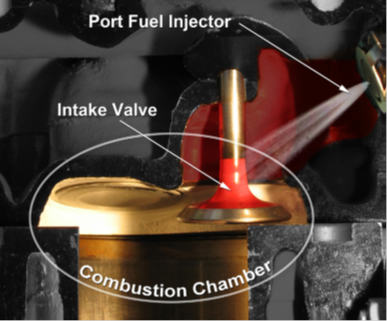
And DI the fuel (or additives) never touch the valves so there is absolutely nothing to deal with keeping the deposits from forming:
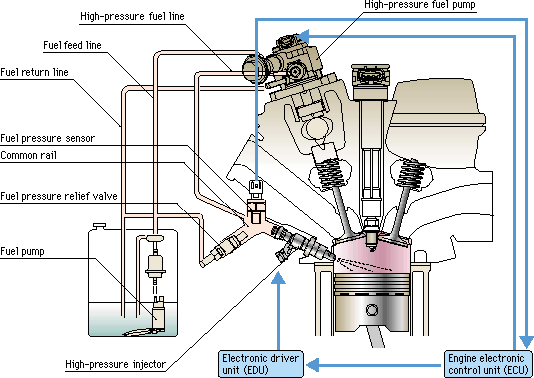
So in as little as 5-10K miles there can be a substantial reduction in the volumetric efficiency of the port and valve design as these deposits build up...and NO race engine builder would agree these have no effect on the engines ability to operate at optimum efficiency:
Every single auto maker, snowmobile, 4 stroke outboard, and motorcycle manufacturer in the world is battling this (just ask anyone that has owned a Mini, BMW, Audi, Hyundai, Ferrari, etc.). Just click on this link and see photos contributed by techs and engineers from all over the world:
https://www.google.com/search?q=inta...h=816&dpr=0.95
And article after article from the industry, white papers, etc. on the issue. Only the PR and marketing talking heads pretend it is not an issue.
And anyone that visits the facility here see's the multiple engines in tear down or rebuild and we show the progression on each at what miles the accumulation grows.

Below is a 2004 GM 3.6L Non DI engine at 120k miles, and you can clearly see the fuel spray pattern has kept deposits from forming on the valves and in the port where it made contact:
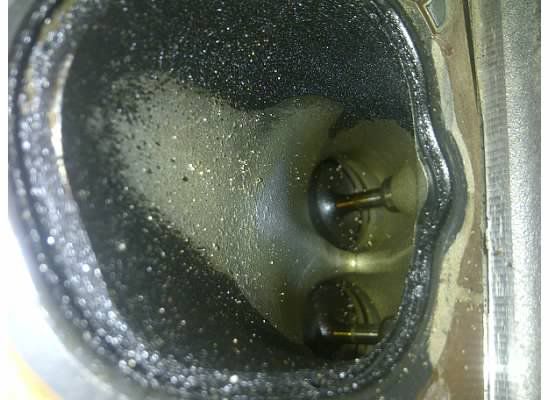
Now the same 3.6L v6 from 2010 with 15 k miles on it DI:
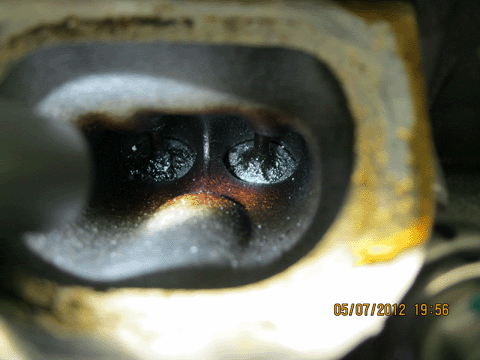
and after dis assembly to do a manual valve job as this also wore the valve guide prematurely from the abrasive deposits:
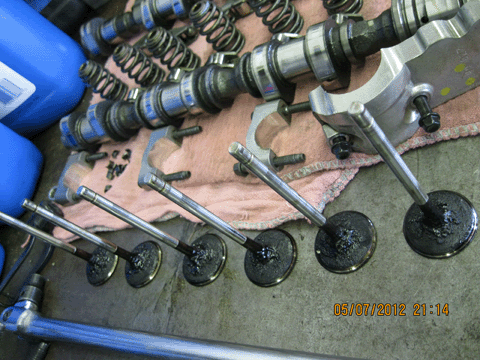
And a closer look to see how this build-up wears the guides:
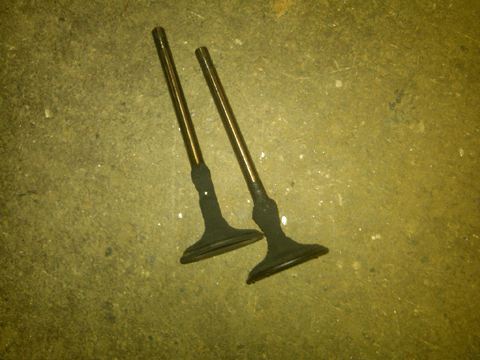
This is new for the US makers except for some GM smaller displacement engines in the past that were early to the DI game, so who is willing to gamble their investment on hearsay?
Far to often I find myself arguing with those that are not techs in this field, yet want to force opinions on the readers...I have done this my entire life, over 40 years, and do this day in and day out. GM recently incorporated one of my simple design changes in all late 2013 and up V6 engines, and it was only a change in the PCV orifice size to remedy crankcase pressure build up and clogging of this orifice, and it took them 4 years. The EB needs a pretty drastic redesign to eliminate these issues. I feel like I'm bragging to list my qualifications and accomplishments, but when a network tech, or a insurance salesman argues crazy theories against fact and industry data, what is going on?
One must look at the cause and effect, and that a great number of factory FI systems have little to no issues like the EB, only the Cadillac ATS 2.0L for 2014 comes close, and it is a similar cause. Ambient air entering the air cleaner is NOT going to condense any but a small amount of water.....this is caused after this air charge has gone through the combustion process and been under extreme pressure and heat where all of the water contained has turned to vapor (steam) and along with unburnt fuel and other hydro carbons enters the crankcase as blow-by and then mixes with oil mist and sulfuric acid that accumulates in such a concentration (because, unlike most every other engine that evacuates this as soon as it enters the crankcase, the ecoboost only evacuates at idle and low throttle when NO boost is present, and then does NO evacuation 80% plus of the time) that when the crankcase pressure forces it to back-flow out the fresh air inlet, it is then pushed into the CAC where it condenses into not just water, but this mix of unburnt fuel. oil mist, sulfuric acid to form this yellow semi-solid Gunk. If it was from the air initially entering there would be none of these other compounds present, and EVERY FI engine would have these issues, and as we have been designing, installing, and selling turbo and super charging systems for 40 years, we see this NO PLACE but the 2 listed. The EB and the Caddy 2.0. Every other has varying accumulations that are a fraction of what the EB experiences.
Now look at the engine oil. It does not "grow" or "rise" on its own. It is these concentrations of the combustion byproducts that are accumulating in the oil as well as what is expelled into the charge system, and that is not good for any engine, much less one as lubrication dependent as the EB that has very tight tolerances, uses the oil pressure to maintain proper tension on the timing chains (another EB issue), as well as critical lubrication to 3 times the moving parts a typical push-rod engine has. All of this is directly related and fix the cause, and the effect disappears (proven by the 200 plus that have installed the EB system since Jan this year).
Then we look further into what happens in the combustion chamber when anything but fuel and air is present. Only a small amount of water can be present w/out negative effect on the combustion process. Any oil reduces the usable octane, and this results in detonation (any log theirs on the street and see timing pulled?) Oil will disrupt the burn pattern and result in an incomplete burn releasing less energy and thus poor fuel economy, as well as the deposits formed and detonation. The unburnt fuel is not detrimental, but still effects the mixture as it is not measured and metered as initially so the target A/F ratio will be off. The ECU/PCM monitors all this data and adjusts in milliseconds to attempt to operate at optimum performance, but any of this ingested affects this.
Take a teaspoon of the oil you run. Now pour it in a saucer, and attempt to light it on fire. You can't. Oil burns very poorly and incomplete. So ANY present in the combustion chamber has a negative effect.
#49
I want to run a catch can to keep most of that stuff out of my intake tract.
Just like I did on my 7.3
And on our Mini cooper,
And on our Mazdaspeed3,
And on just about every other Turbo car I will ever get.
If you don't agree that it is keeping stuff out of the engine, than that is just fine, but you can't deny that it is keeping it out of the rest of the system.
I don't see the big conspiracy these guys have going! hah!
Just like I did on my 7.3
And on our Mini cooper,
And on our Mazdaspeed3,
And on just about every other Turbo car I will ever get.
If you don't agree that it is keeping stuff out of the engine, than that is just fine, but you can't deny that it is keeping it out of the rest of the system.
I don't see the big conspiracy these guys have going! hah!
And any FI any of this ingested due to the increased static CR can destroy an engine in seconds. Detonation is the enemy of FI as is heat.
We build the Mazda speed 3 to 500-600 plus whp and they are also DI. They were early adopters as well. So we have someone speaking from a good line of DI vehicles and has seen that and been there.

Oh well. Nobody wants to put themselves out there.
This is being recommended as a complete fix for the CAC condensation and limp mode. I agree with all other reasons to have one, but not this.
By all reports, it fills faster in cold weather. How is it possible that can be reconciled with the observation that the CAC condensation and limp mode occurs primarily in summer, humid weather. If the flaw in the PCV system were the cause of condensation and limp mode, you would expect times where there is more water caught would also be times when the likelihood of limp mode is higher.
The fact that we see an inverse relationship between periods of high catch can accumulation and likelihood of having a cac condensation, limp mode incident tells me the problems are not causatively related.
I don't see how this can be worked around.
This is being recommended as a complete fix for the CAC condensation and limp mode. I agree with all other reasons to have one, but not this.
By all reports, it fills faster in cold weather. How is it possible that can be reconciled with the observation that the CAC condensation and limp mode occurs primarily in summer, humid weather. If the flaw in the PCV system were the cause of condensation and limp mode, you would expect times where there is more water caught would also be times when the likelihood of limp mode is higher.
The fact that we see an inverse relationship between periods of high catch can accumulation and likelihood of having a cac condensation, limp mode incident tells me the problems are not causatively related.
I don't see how this can be worked around.
I like that someone else is thinking this through...
Like I said earlier, the catch can is positioned in the middle of the PVC system. It's a no brainier that it will catch stuff, more in the winter when the trucks take longer to warm up and can not vaporize all the gunk.
The real test will be when it's hot with humidity and rain. Will the catch can be a fix for the condensation in the inter cooler. It's been advertised by Rx and Turner Boost that this will be the case. I don't know if there is a relation between the can, which is suppose to address the PVC system, and the condensation issue. The only thing I see is because the fluids look alike, they must be related?
Well see...
Like I said earlier, the catch can is positioned in the middle of the PVC system. It's a no brainier that it will catch stuff, more in the winter when the trucks take longer to warm up and can not vaporize all the gunk.
The real test will be when it's hot with humidity and rain. Will the catch can be a fix for the condensation in the inter cooler. It's been advertised by Rx and Turner Boost that this will be the case. I don't know if there is a relation between the can, which is suppose to address the PVC system, and the condensation issue. The only thing I see is because the fluids look alike, they must be related?
Well see...
You must fix the lack of proper evacuation that is the cause to begine with. 99% of all other engines have very little issue because they are constanly evacuating these compounds as soon as they enter the crankcase, so correct the EB system and it all goes away.
I still stick to my theory. Both the pcv and CAC create condensation, and with both, there is a chance you will ingest to much moisture and go in to limp mode. However, if you eliminate one of these, either drilling hole or catch can, then the build up of condensation is not great enough to put the truck into limp mode. Thats why both parties say there solution works. There are 2 sources for the condensation, remove just one of the source and my thoughts are its not enough to effect the truck. Or is this just Ignorant thinking? I know what Left Plate thinks, but what about the rest?
"had the RX catch can been available then, that is where I would have started!
Time will tell if this is the complete fix? At the very least, it is one of the keys to the castle!"
 We're on the same page. If you read any of my other posts on this, I understand the value of keeping the swill out of the intake/combustion chamber.
We're on the same page. If you read any of my other posts on this, I understand the value of keeping the swill out of the intake/combustion chamber.
Time will tell if this is the complete fix? At the very least, it is one of the keys to the castle!"
 We're on the same page. If you read any of my other posts on this, I understand the value of keeping the swill out of the intake/combustion chamber.
We're on the same page. If you read any of my other posts on this, I understand the value of keeping the swill out of the intake/combustion chamber.Yes, no matter what you want this "swill" to never be ingested, but to date, no other system addresses the flaw in the PCV system, and having seen these in action (over 14,000 systems in 12 years plus) I will guarantee it is the fix.
This is nothing new, just to the ecoboost crowd, and the more that post their results the more this is proven.
#50
As those with the PCV mod done with the RX dual valve system all testify, it cures it all by eliminating the cause in the first place. The drill mod is a help but why not fix the flaw and not have any of the problems I go into detail in my first reply here? Best way to prove to yourself, is to do it and see first hand. And it can be done with 3 other cans on the market as well, all direct competitors to RX. RX just has the only system already designed to address all of this. A catchcan alone is only trapping the mix after the fact. Fix the flaw and you trap it and eliminate it in the crankcase to begin with.
Again. If more moisture is produced in the crankcase and collected in winter the logical conclusion is that more condensation related limp mode incidents would happen in winter. Yet that isn't what we see. In fact,we see the opposite. The condensation related limp mode almost exclusively occurs in summer. And in much greater likelihood in periods of high humidity or rain. This also does not match your explanation.
I don't see any way to reconcile the observations with theory as described by you . Theory is always trumped by observation.




 some days I wonder why I even bother to try?
some days I wonder why I even bother to try? lol
lol
